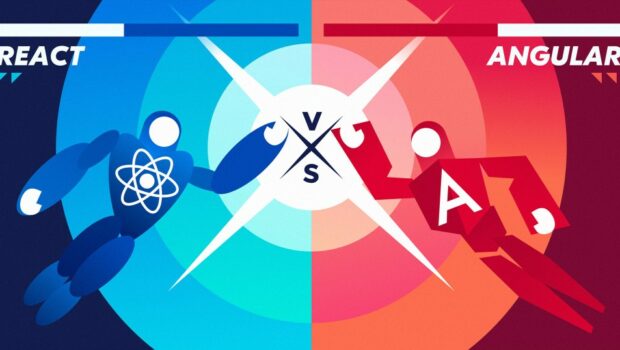Angular vs React: How to Choose the Right Framework
Are you a developer trying to understand which framework would work better for your project: Angular or React? According to recent reports, almost 36% of front-end developers choose React while 25% of users prefer Angular 2. More-or-less, these programming languages are equally popular. However, Angular might have a bit more questions left behind.
Still, you should consider the peculiarities of your project and the difference between these two frameworks before choosing one of them. Read this post to learn more.
Technical Aspects
It makes sense to start with their performance. Most often, front-end developers choose these frameworks to come up with original large-scale projects. From freelance spaces like Upwork and writing academies like https://essayreviews.net/bestcustomwriting-com/ to payment systems like PayPal, these two can help craft outstanding, easy-to-navigate websites.
It might be difficult to see the difference between Angular and React with the naked eye. However, the gap exists. Angular II, the most commonly used version nowadays, functions on a real document object model (DOM). At the same time, React applies virtual DOM. DOM is a programming API for HTML and XML documents that determines the logical doc structure.
Let’s pretend that you want to update the account information of your users. It could be contact details. In the case of Angular 2, it’s possible to modify the full tree structure of HTML to achieve the required result (updated contact details). This framework can be rather slow when there is too much data to proceed. In the case of React, one can do the necessary modifications with no need to fully rewrite an HTML document. You may guess that it results in quicker processes. The size of the software then doesn’t play any role.
Scalability
React is rather dependent on third-party solutions. There are two sides to the coin, so it’s hard to call it a perk or pitfall. Developers simply create maintainable architectures with server-side rendering with this specific framework. The idea is to remember the scope of the application at any stage of work to realize whether React or Angular is a better choice.
Interestingly, the world’s most popular social media platforms have plenty of React components (e.g., Facebook and associated services). Websites for banking (e.g., Deutsche Bank), business (e.g., Forbes), education (e.g., https://www.best-essaywriter.com/complete-coursework-for-me), and many other industries possess some React elements, but, usually, they use a mix of different frameworks and languages. Angular contains all the necessary options that experts might demand to scale software by coming up with brand new features.
Element Architecture
If one decides to create their project using React, they should find numerous integrations and supporting elements. This framework builds user interfaces (UIs) by separating them into various elements. A developer should first come up with elements and integrate them to achieve more complicated UIs. These components involve:
- Babel
- Webpack
- Redux
Angular has many options that have nothing to do with other frameworks. Original features include Angular CLI (command-line interface), RxJS (deals with JS), and Angular Universal (is the one for server-based rendering).
Mind that, unlike Angular II, React is a library. Thus, a developer may easily use it for any application or program. Even if the software is initially written in Angular, it’s possible to integrate React in this framework. Overall, both possess robust ecosystems.
Learning Curve
Angular is way more difficult to master than React. This factor prevents some coding students from moving on with the former one. It just has plenty of tricky aspects and syntax to understand and memorize. On the contrary, React is easier to understand. The reason is the entire component’s code is stored in a single file.
Data Binding
While React is a single-way data binding framework, Angular II stands for a 2-way data binding. In the case of the former one, a user interface component can’t modify the state of this element, while in the second case, each time the input in the user interface is changed, the model state is fully modified as well.
Backward Compatibility
There is no way to switch from Angular version two to version seven whenever you want. A developer has to set up the necessary updates in the required order to do that. It might take some time. Angular’s main rival can boast complete backward compatibility. It allows adding various library updates to the app and modifying the outdated ones immediately. At this point, React might be a better option for those who plan to come up with new models frequently.
Languages
How about the languages associated with these frameworks? In the case of Angular, it relies on both JavaScript and its updated version known as TypeScript. It is the superset of Java, in other words. When it comes to React, it can be done in TypeScript, which isn’t included natively, but experts recommend using the so-called JavaScript XML (JSX) language
Verdict
Even though sources like this one claim that React is the top-preferred framework (almost 75 percent of users agree), Angular has its advantages. Otherwise, more than 57 percent of developers would not work with it. These two might be used for different purposes, and it’s up to the project owner and developers to decide which framework would fit those objectives best of all.
Anyway, it is not necessary to stick to just one framework and apply it to all of your projects.
Cover image credits
















